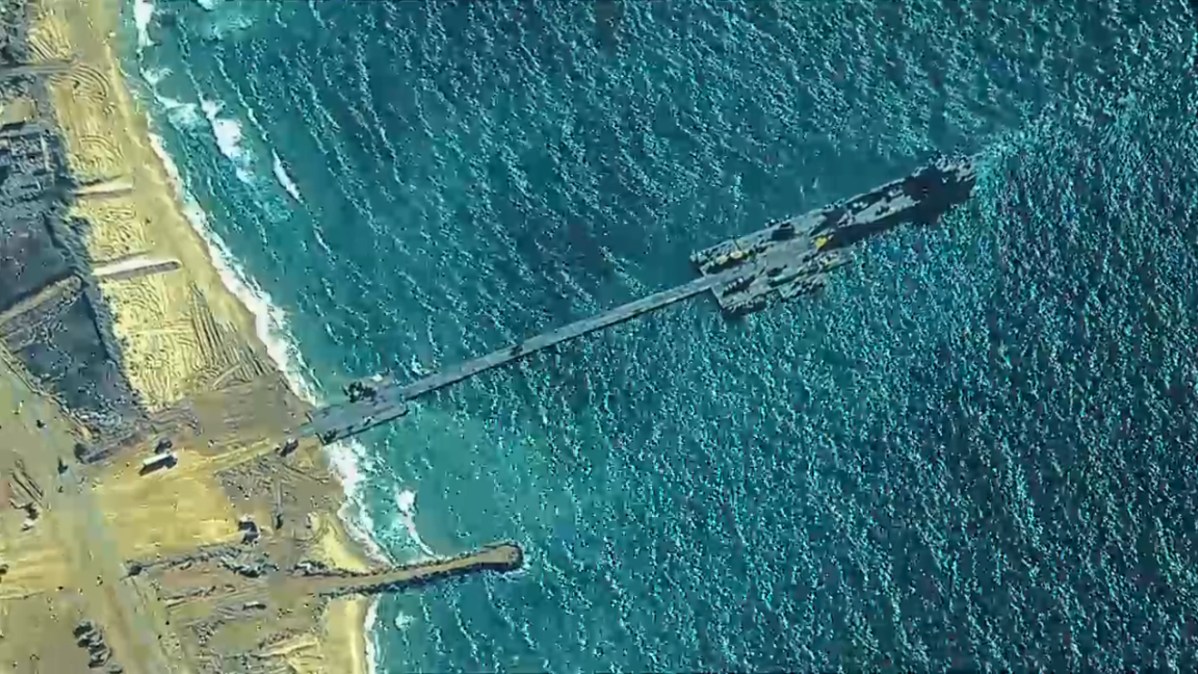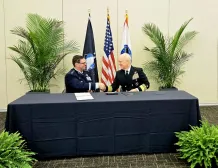Space Force continues expansion of commercial surveillance, data analytics program

COLORADO SPRINGS, Colo. — After completing a successful pilot period, the Space Force is scaling its Tactical Surveillance, Reconnaissance and Tracking (TacSRT) program to enable more combatant commands to leverage space-based commercial imagery and analytical products.
Initiated as a pilot effort in 2023, TacSRT established a marketplace where CoComs can directly purchase commercial imagery and related data analytics. In order to expand the program, the Space Force received an additional $40 million in funding as part of the continuing resolution passed by Congress in March.
“The addition of this money represents a congressional vote of confidence in our efforts to tap into the commercial space market for the collective good,” Chief of Space Operations Gen. Chance Saltzman said Wednesday during his keynote address at the annual Space Symposium.
Saltzman and other service leaders have touted the success of TacSRT in recent months, especially the initiative’s ability to rapidly deliver critical information to warfighters. Through the program’s Global Data Marketplace, combatant commands can put in requests for “operational planning products” that include unclassified data from imagery and sensors collected by commercial space vendors.
Col. Rob Davis, program executive officer for space sensing at Space Systems Command, told reporters Wednesday that TacSRT data is primarily being used to support humanitarian operations and monitoring of illegal fishing around the world.
And while the pilot version of TacSRT initially supported U.S. Africa Command, leaders at other combatant commands are leveraging the program’s marketplace as well. For example, U.S. Central Command also purchased commercial data analytics during construction of the Joint-Logistics-Over-the-Shore pier in Gaza, and TacSRT provided U.S. Southern Command with real-time tracking of wildfires in South America, according to the Space Force.
As it looks to scale TacSRT, the service is still figuring out the best ways to operationalize the program, Davis said.
In the TacSRT Tools Applications and Processing Lab, “we are doing the development of additional techniques, partnering with industry, partnering with [Space Force] component field commands … to develop new tools that we can then operationalize, as well,” Davis said during a media roundtable. “We continue, in that more developmental space, to do ad hoc support through that experimental space to answer questions that combatant commands have.”
With plans to expand TacSRT, the Space Force is also working with the intelligence community — including the National Geospatial-Intelligence Agency and the National Reconnaissance Office — to delineate roles and responsibilities for purchasing commercial imagery.
Under current Pentagon-IC policies, NGA is responsible for buying analytical models and ISR products from commercial providers, as well as determining who across the government receives the packaged data. At the same time, the NRO is tasked with acquiring imagery from commercial remote sensing satellites and disseminating it across the Pentagon and intelligence community.
However, the Space Force’s TacSRT pilot caused some tension between the service and intelligence agencies — with some concerned that the Space Force’s acquisition and distribution of space-based commercial imagery is a duplication of NGA’s and NRO’s work.
But after years of back and forth, NGA Director Vice Adm. Frank Whitworth told DefenseScoop in an interview that the agency and the Space Force have drafted a “memorandum of agreement” over the relationship between NGA and TacSRT. The service is also finalizing a similar agreement with the NRO, according to a report from Breaking Defense.
Whitworth explained that in his role as functional manager for geospatial intelligence, he is charged with oversight of both the Defense Department’s and intelligence community’s acquisition of space-based ISR from commercial satellites. To that end, his responsibility moving forward will be reporting on the use of commercial imagery in warfighting — including via TacSRT — to lawmakers while also involving the Space Force, he said.
“This fits beautifully into being that integrator, and Congress feels the same way from a stewardship perspective,” Whitworth said. “So getting to that issue [of] we’re not paying twice, keeping that denominator involving TacSRT officially in our world and vice-versa is healthy.”






